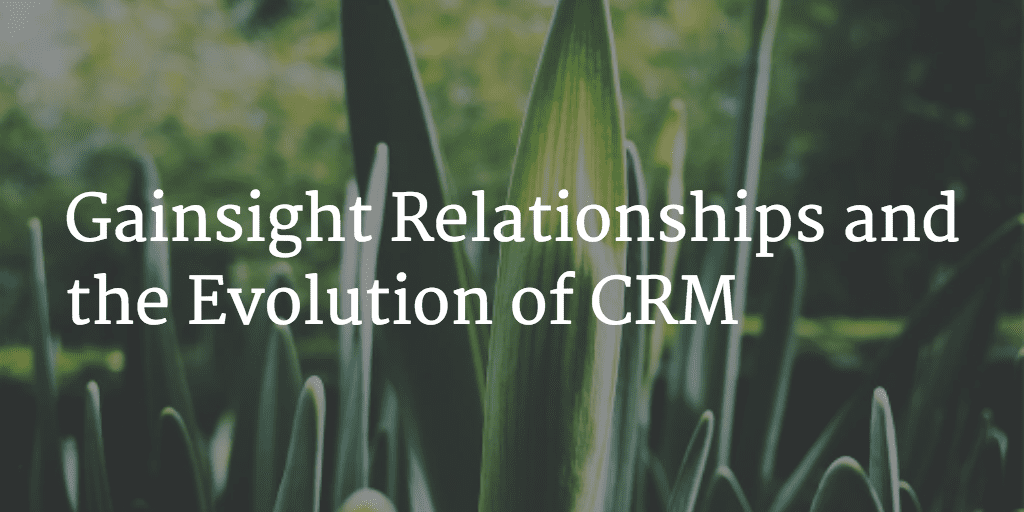The Parallel Value of the Opportunity Object to Sales
I learned recently that what we now call Salesforce Automation (SFA) was originally called “Opportunity Management.” This makes sense — in my opinion, Opportunity is the most important and nuanced concept in SFA systems.
The Opportunity object captures in software the quite abstract notion that “We have a chance to sell something to this Account” and provides a foundation for managing the resulting sales process. Crucially, there can be more than one Opportunity per Account.
In a relatively simple business, with a single offering that is sold at most once to each Account, you could get away without the Opportunity object by just tracking sales information like ‘key decision maker’ and ‘likelihood to close’ directly on the Account. But as soon you sell more than one offering or can sell a single offering more than once into an Account (e.g. separately sell to the Marketing and Finance departments), tracking things on the Account breaks down. But you can handle it with Opportunities: one Opportunity to capture and manage the possibility to sell Product A to the Marketing department, another Opportunity to sell Product A to Finance, and a third to sell Product B to Finance.
It is important to point out that, as great as it is, the Opportunity has been developed to help manage only one very specific thing: the “Opportunity to Close” process. When a sale is made the Opportunity is ‘Closed-Won’ and that is the end — after the close everything is static: Assets, Contracts, Closed Opportunities. The system is built on the premise that “Your work here is done; now go out and win some more deals.” Yet nowadays we understand that in the vast majority of businesses, customer management and even selling are just beginning at Closed-Won. There is a gap. What is the analogy to Opportunity in the post-sale world? What should happen after Closed-Won?
The Rise of the Relationship
In Gainsight, a Customer is what you get from an Account when you have sold it something. For relatively simple or homogeneous businesses, just as you could theoretically manage sales with just the Account object, you can manage the Customer with just the Customer Object. Customer data, Health scores, and customer success workflows can all operate at the level of the Customer as a whole. But when things get more complicated, such as if you have sold multiple products or have sold the same product multiple times to a single Customer, you need a new concept. We call this new concept the Relationship.
Just as Opportunity objects capture potential business relationships, our Relationship objects capture ongoing business relationships.
To make this concrete, imagine that we sell two products: A and B. They are different enough that selling one of them is quite independent of selling the other; we might even have different sales people for the two products. It would be totally normal to be simultaneously trying to sell both of them to the same account. Managing that is no problem since we would have separate Opportunity records for the two sales processes.
Now imagine that we succeeded in selling both products to the same account. Managing things after the sale — ensuring adoption, renewal, etc. — is quite different for products A and B. We may even have separate CSMs for them. In Gainsight that is no problem since you can have separate Relationship records, each of which captures things like renewal date, usage data, support issues, health scores, calls to action etc. corresponding to the customer’s use of that product. So in a strong sense the Relationship object picks up where the Opportunity object stops.
The Divergence of the Opportunity and the Relationship
While the analogy between Opportunities and Relationships is very strong, in a certain way Relationships are actually quite a bit more sophisticated. Even though product A and product B are very different, requiring separate sales cycles and thus separate Opportunities, the structure of the sales processes for the two products are basically the same. One may have a 50% chance to close and the other an 80% chance to close, but in both cases it is key to track the likelihood to close. To a large degree, no matter what the product, selling is selling.
But after the deals are won and the products start getting used, the differences magnify. Perhaps product A is a subscription so renewal date and ARR are critical values, whereas product B operates on the basis of ‘credits’ so the CSM needs to track the number of credits consumed and the number remaining. And, of course, usage data could be structured in totally different ways for the two products. So not only do we have two relationships with this customer, the nature of those relationships are actually pretty different.
In order to support this sort of situation, in Gainsight it is possible to define Relationship Types. In this case, one Type would be configured to track ARR and renewal date and the other credits used and credits remaining. And, of course, associated with each Relationship type there is a visual layout — a 360 page definition — that shows the info and status for that works best for that type of relationship.
In Gainsight, we feel pretty strongly that the Relationship is a concept whose time has come. Managing customers is just as hard as — even harder than — selling to them in the first place, and the tools need to be available to support the reality of sophisticated customer management. We are also excited that by defining Relationships and Relationship Types, businesses get a language in which to capture something really fundamental: What is a customer for your business, or, rather, what are the variety of ways of being your customer.

